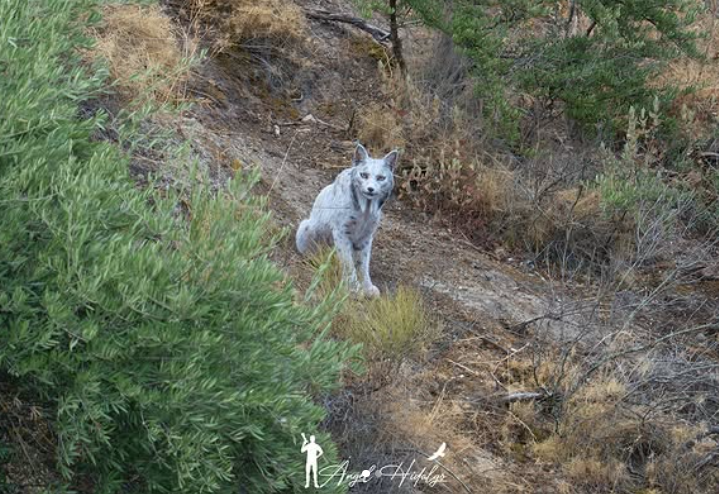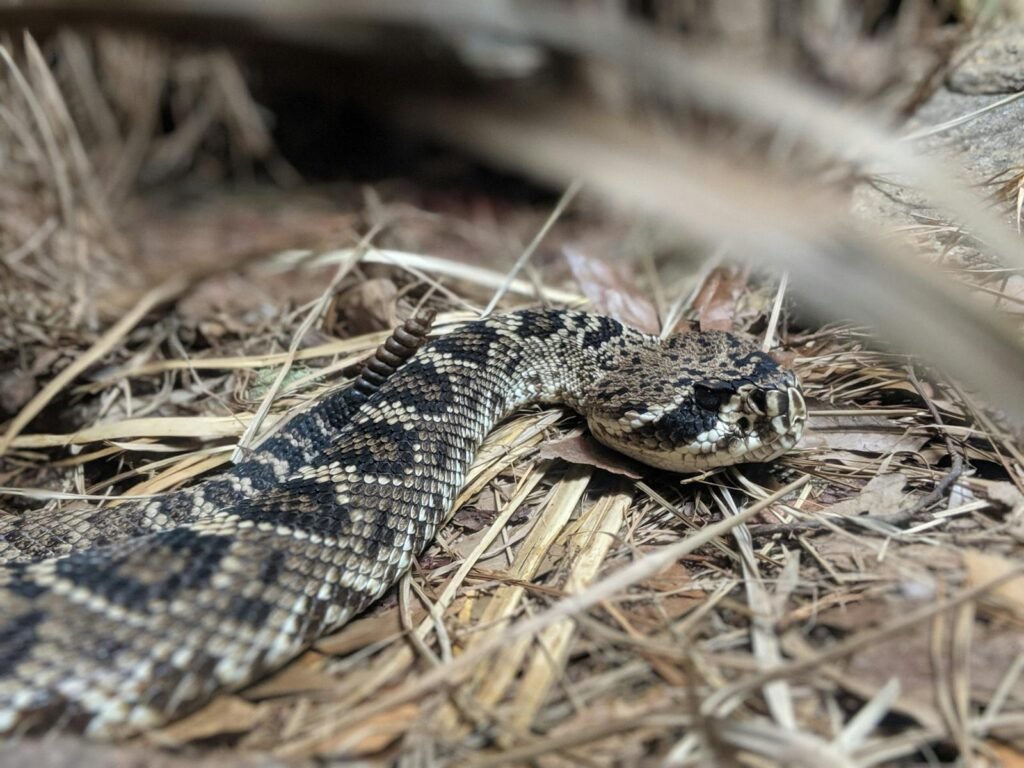Every once in a while, nature tosses us a miracle — something so unexpected it feels almost mythical. That’s exactly what happened in southern Spain when amateur photographer Ángel Hidalgo captured photos of a white Iberian lynx, a creature no one had ever seen before.
The photo, taken near Jaén in Andalusia, shows a lynx with a pale, ghost-like coat standing against the green Mediterranean scrub. Hidalgo told reporters he couldn’t believe his camera had picked up something so unique. “At first, I thought the light was playing tricks,” he said. “Then I realized — this was real.”
A First in the Wild

The lynx, identified by researchers as a four-year-old female named Satureja, is officially the first white Iberian lynx ever recorded. Her story emerged at the end of October 2025, when conservation teams with LIFE Lynx-Connect confirmed the sighting.
The Iberian lynx is already one of Europe’s rarest cats, so spotting one with this kind of coloring is beyond extraordinary. Normally, they wear a golden-brown coat dotted with dark spots — camouflage perfectly tuned for the olive forests and grasslands of Spain and Portugal. But Satureja’s fur glows a striking white, with only faint specks where her rosettes should be.
Not Albino, Just Mysterious
Scientists were quick to clarify what she isn’t: Satureja is not an albino. Her eyes are amber, not pink, and she shows no other pigment-loss symptoms. Her condition seems closer to leucism, a rare genetic quirk that causes partial lack of color.
Interestingly, researchers say her fur wasn’t always white — she was born with the typical brown coat and gradually paled over time. Despite the dramatic change, she behaves like any other lynx, hunting rabbits and even raising healthy kittens in the wild.
One biologist from Spain’s Environment Ministry said, “It’s as if nature painted one of our most endangered cats in a new light — literally.”
The Lynx’s Remarkable Comeback

Just 20 years ago, the Iberian lynx was on the edge of extinction — fewer than 100 individuals remained in the early 2000s. Thanks to massive cross-border efforts between Spain and Portugal, that number has since climbed to more than 2,000 cats, and the species was officially upgraded from endangered to vulnerable in 2024.
The return of the lynx has become one of Europe’s greatest conservation success stories. These wild cats now roam the protected parks of Andalusia, Castilla-La Mancha, and Alentejo — places where their silhouettes once vanished entirely. Seeing a rare white lynx among them feels almost poetic, a symbol of just how far the species has come.
A Living Mystery and a Sign of Hope
For now, scientists are eager to learn what caused Satureja’s snowy transformation. They plan to gently capture her for genetic testing to understand whether this is a simple mutation or something more unusual.
Her pale coat might make her stand out more to prey, but conservationists say she’s thriving nonetheless — a quiet survivor in a landscape reborn from loss. And perhaps that’s why this story resonates so deeply: in a forest once filled with silence and scarcity, a white lynx now walks freely, reminding us that nature always finds new ways to surprise us.

Hi, I’m Andrew, and I come from India. Experienced content specialist with a passion for writing. My forte includes health and wellness, Travel, Animals, and Nature. A nature nomad, I am obsessed with mountains and love high-altitude trekking. I have been on several Himalayan treks in India including the Everest Base Camp in Nepal, a profound experience.



